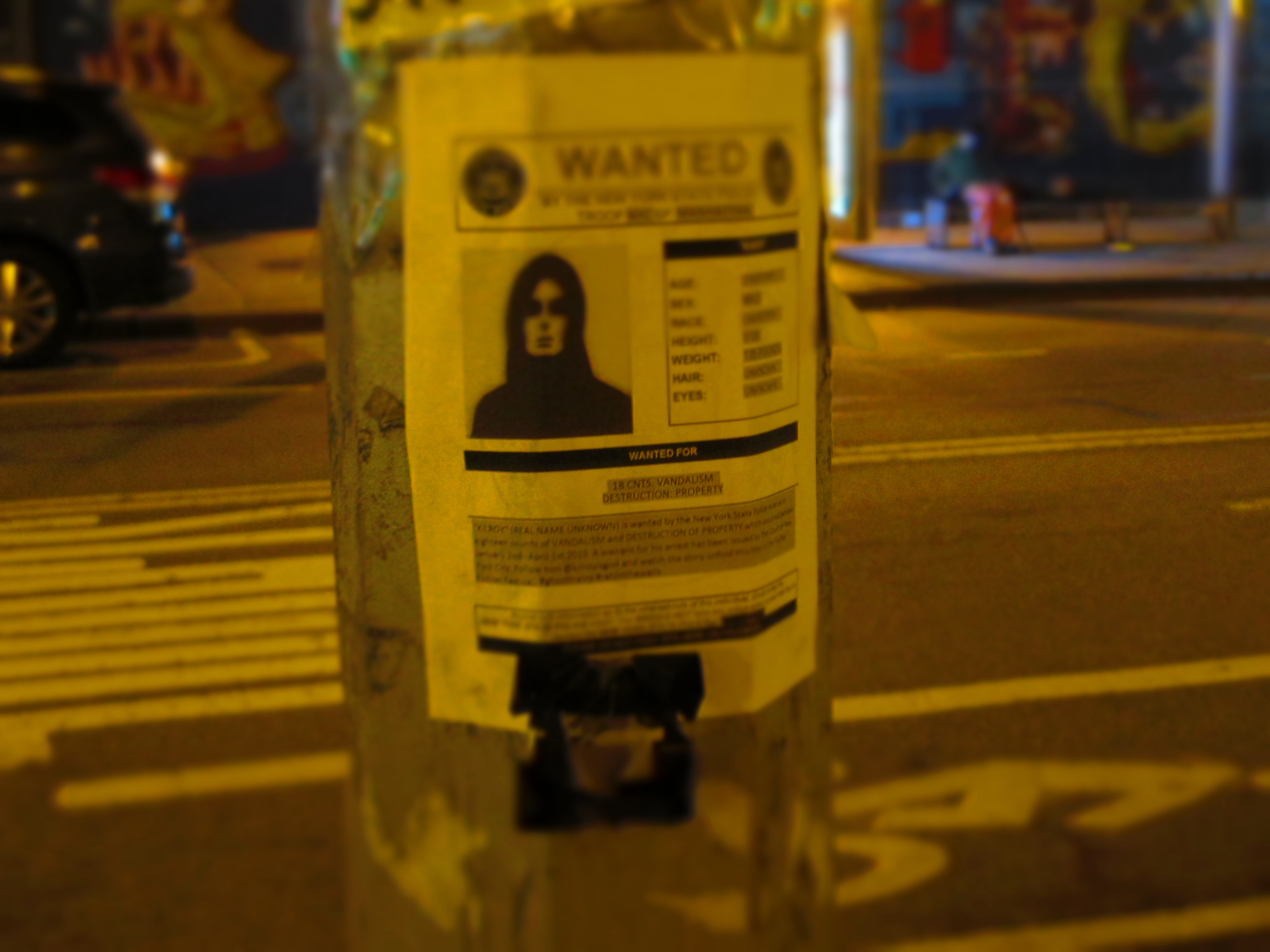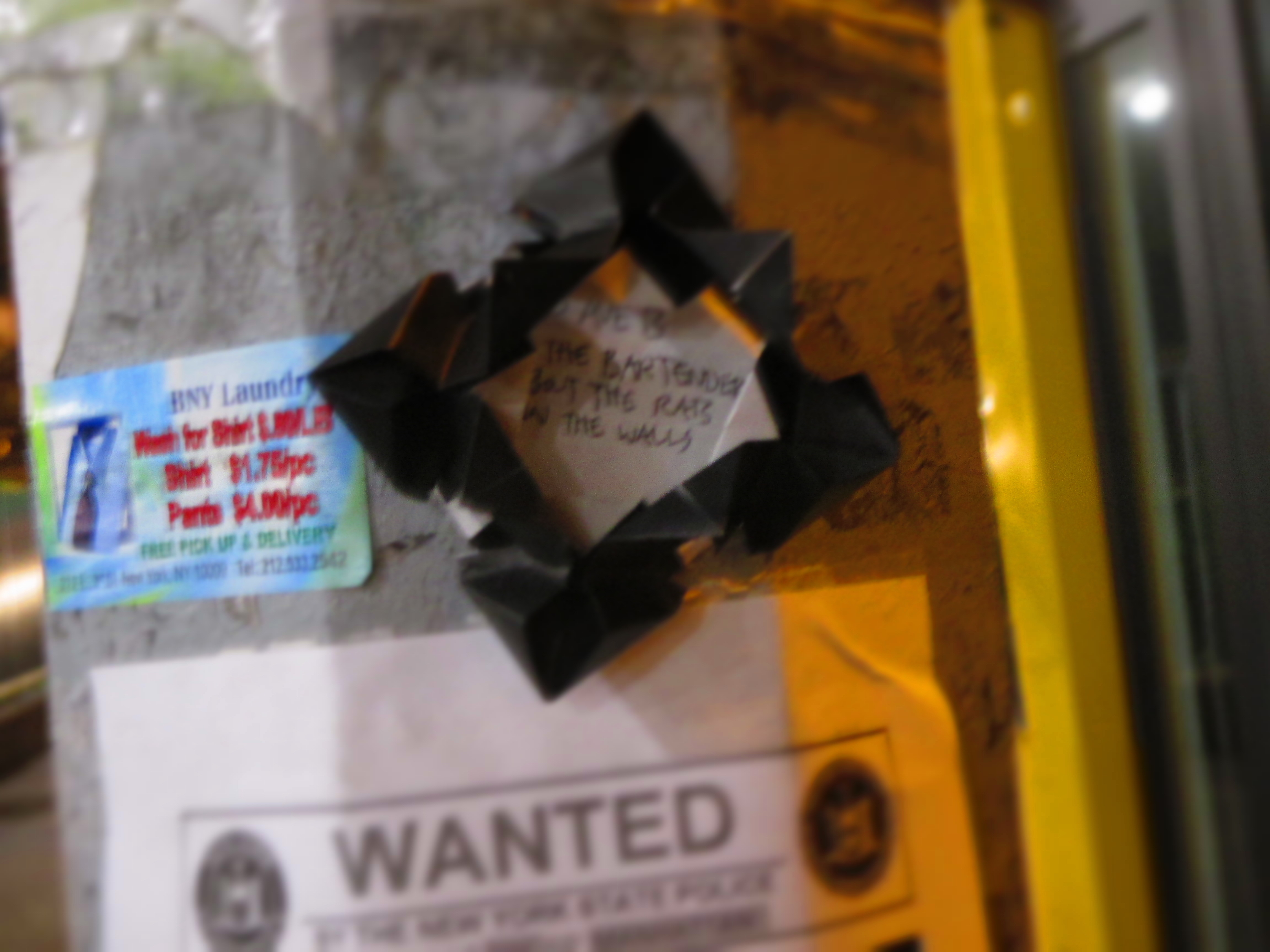Starting today, you can find black origami lotuses scattered around the East Village below 11th St and east of 2nd Ave, accompanied by WANTED posters of Kilroy. Every lotus has an address and a message, leading you deeper into the Rats’ conspiracy. Follow Kilroy on Twitter @kilroyisgod and receive a map of the lotuses’ locations, revealing their terrible symmetry.
Follow the hashtag #ratsinthewalls to keep up on the occult activities of the Rats, like the new Tree of Sephiroth in Union Square.
Click the circular button below to Share.





